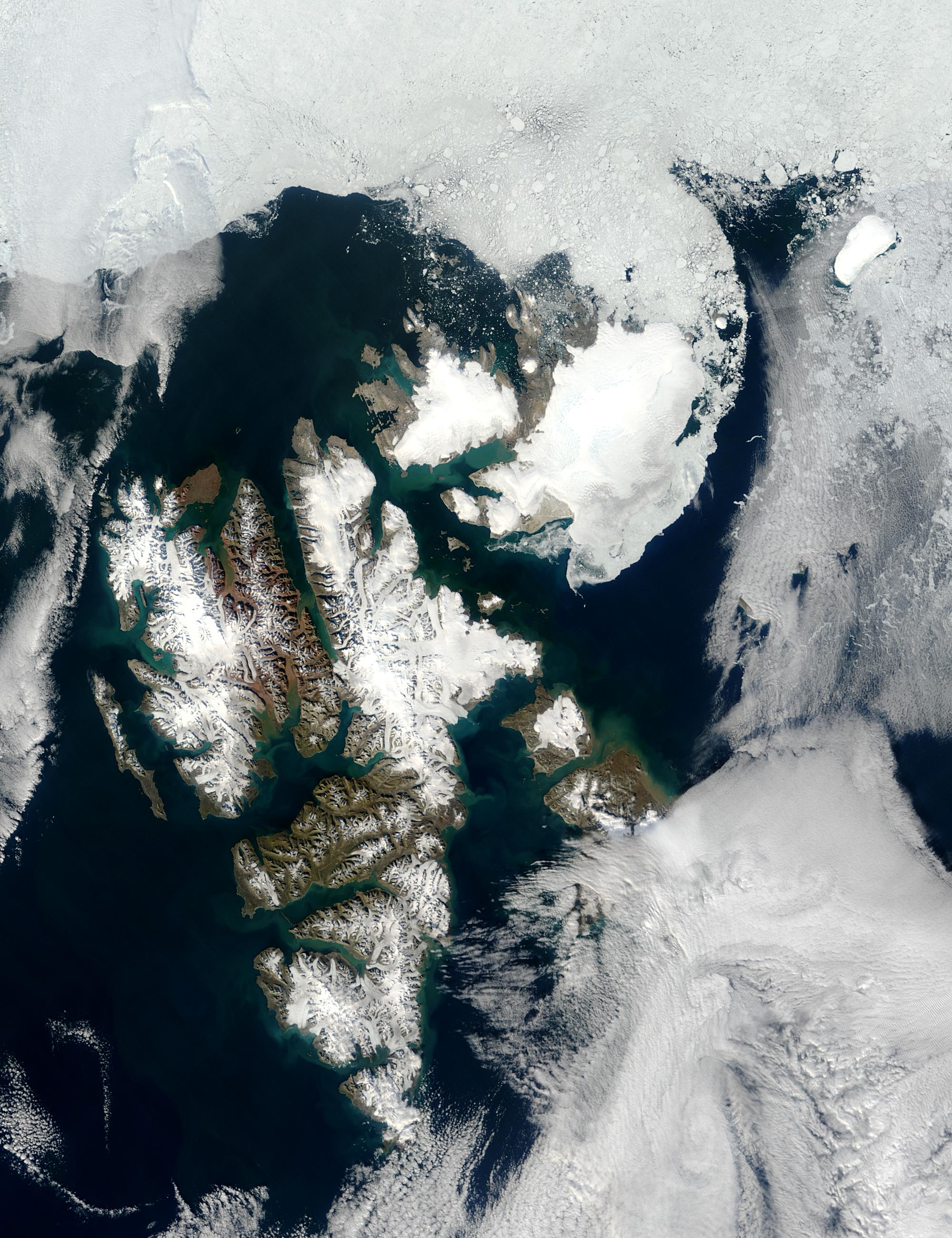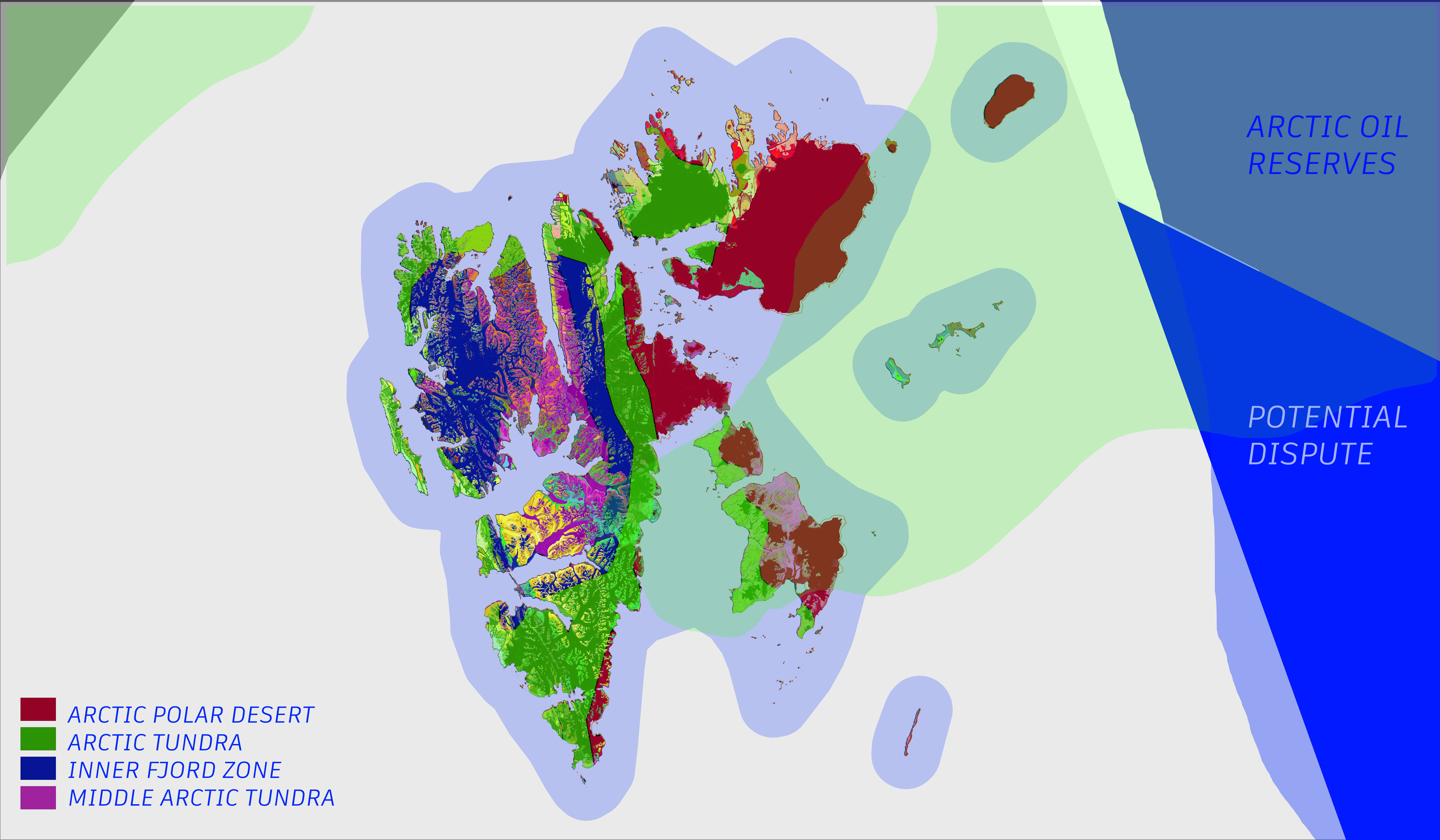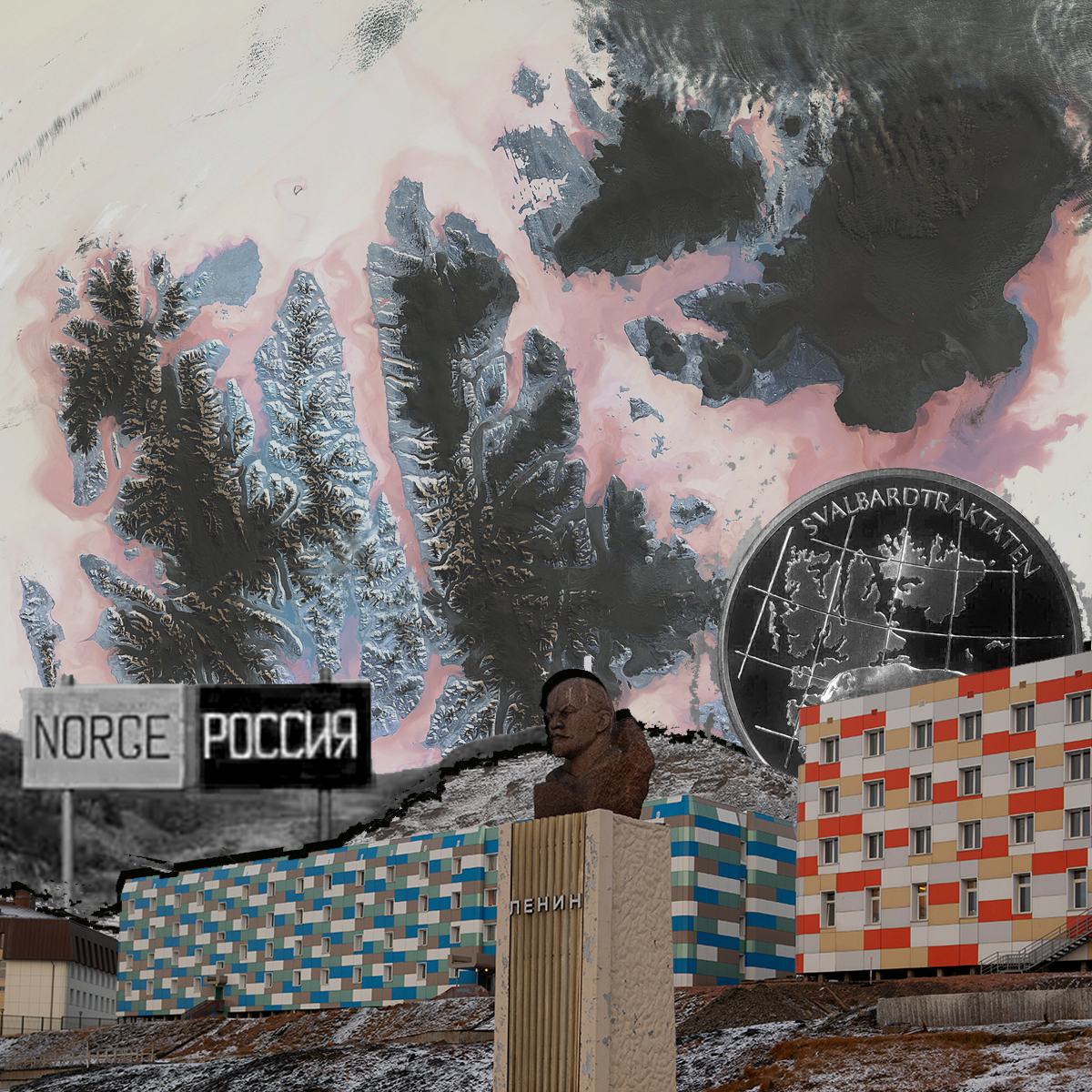Projective Mapping the Controversial Timelines of Svalbard, Norway
INTRODUCTION
Svalbard is a norwegian archipelago in the Arctic Ocean and lies between the northern coast of Norway and the North Pole.It is also the most northern inhabited place on the planet, with the largest settlement being in Longyearbyen.
 Jacques Descloitres, MODIS Rapid Response Team, NASA/GSFC. 2003. Photograph. 2000x2600 pixels
Jacques Descloitres, MODIS Rapid Response Team, NASA/GSFC. 2003. Photograph. 2000x2600 pixels
In the Arctic, there is a war over resources. As the ice melts more and more, many countries surrounding the Arctic are wanting to stake claim in Svalbard and utilize its resources for their own purposes. Many people see this as a looming disaster, but for the Arctic Nations, this change means an opportunity - access to a brand new ocean.
 This map shows the relationship of Svalbard to surrounding countries
This map shows the relationship of Svalbard to surrounding countries
ABSTRACT
We are interested in mapping three main factors in Svalbard related to time and producing a projective overlay that interrogates how these factors interact in the future, through the lens of a climactic timescale:
- Climate Change
- Industries and Resources
- Oddities and Border Anomalies
PROJECTION OF CLIMATE CHANGE
Currently experts from the Norwegian Polar Institute are among those who calculate that the Arctic Circle is heating six times faster than the global average, making it the fastest warming place on Earth.The temperature has jumped 4 degrees celsius in the past 50 years and there are now many wildlife and human lives struggling to survive.
 Timeline of Glacier Melting and Resource Extraction
Timeline of Glacier Melting and Resource Extraction
The melting of the arctic is diminishing local fauna’s hunting grounds, leading them, mostly polar bears, to explore built up areas. The rising temperatures are causing thawing of frozen grounds which also increases the risk of avalanches during the winter and mudslides during the summer in the Arctic community. As glaciers in the Arctic thaw it becomes more feasible to extract natural resources from previously frozen waterways.
PROJECTION OF INDUSTRIES AND RESOURCES
Russia and Norway have renewed a current affair over the status of waters around the archipelago of Svalbard. The countries have recently exchanged diplomatic blows over whether Russian fishers are entitled to fish freely in the area, without controls exercised by Norway’s authorities. Svalbard contains a “Global Seed Vault” which acts as a secure backup facility for the world’s crop diversity. The Seed Vault provides long-term storage of duplicates of seeds conserved in genebanks around the world, which will provide security of the world’s food supply as catastrophic events occur in the future.
Svalbard’s wildlife is uniform, ranking low in species diversity compared to temperate regions. However, these species residing in Svalbard are quite abundant. During the summer, many species can thrive in Svalbard as soils thaw and animals come out from hibernation. It is often seabirds that migrate during this season and are intensely active at sea and on the coasts. However, this contrasts with species that come out in the wintertime, when permafrost builds up and the soil freezes. It is only the most robust species, such as reindeer, polar bears, Svalbard rock ptarmigan, and Arctic foxes that can be seen during the winter.
 Fauna Resources
Fauna Resources
Species that are active during the winter have adapted to the extreme conditions of Svalbard. The largest challenge is to obtain enough food and water in order to survive and reproduce. The Svalbard reindeer, the Arctic fox, and the Svalbard rock ptarmigan all have the capability to store enough energy reserves during the summer and autumn, adding a layer of body fat for survival throughout the winter when the food supply is low.
 Flora Resources
Flora Resources
Although residing in the Arctic, Svalbard has a wide variety of landscapes and is home to numerous species of remaining large wilderness areas in Europe. During the winter months, large areas are ice-covered, and many areas have permafrost which makes a number of plants and animals go dormant. However, during the summer, temperatures rise high enough to allow many plants and animals to become active during the warmer months.
PROJECTION OF ODDITIES AND BORDER ANOMALIES
The coal-rich archipelago came to Norway through the Svalbard Treaty in 1920. The treaty was signed by numerous countries which granted Norway “full and absolute sovereignty” over the entire landmass. However, Norway’s sovereignty over Svalbard is limited and the islands remain legally distinct from the mainland. Norwegian tax laws do not apply to Svalbard and immigration rules compromise Norwegian dominion. Several foreign communities have taken advantage of Svalbard’s open borders, especially those of Russian descent.
 Oil Drilling Sites and International Influences
Oil Drilling Sites and International Influences
Norway is planning to expand its oil drilling in previously untouched areas within the Arctic, a decision that many conservation experts say will threaten the fragile ecosystem and could instigate a military standoff with Russia. Experts also claim that potential drilling sites could be a risk, both environmentally and economically, as well as antagonizes other nations who are in the Svalbard Treaty.
These oil drilling sites, however, are juxtaposed by cities within Svalbard that contain certain international influences. For example, a Russian state-owned coal company maintains Svalbard’s second-largest settlement. Considering coal mining is not very profitable and requires assistance from Moscow, Russia keeps Barentsburg thriving and its political claim in Svalbard through the encouragement of tourism. Although tourism has increased in Barentsburg since Russia shifted its priorities in Svalbard, it will soon be one of the leading causes of air pollution and will affect the local ecosystems residing in this country. Global warming will force species to move northward and may cause extinction of certain species.
Thais form the second largest foreign group that resides in Svalbard. Many miners that worked in the coal mines left on vacation to come back with wives from Thailand. The local supermarkets are said to now have Asian corners with numerous Asian commodities for sale. Svalbard does not presently have an easy migration option. Welfare is not provided and anyone without a job and a place to stay can be summarily deported. Svalbard also lacks local democracy. The governor, who also acts as the police chief, is appointed by Oslo. Building regulations are extremely strict and most land is devoted to nature reserves. Many other oddities see Svalbard as a potential “European Freestate”. Apparently, it is illegal to not carry a gun outside of certain settlements. Svalbard acts as the home of numerous significant arctic research stations, owned by numerous countries around the world, one notably being India.
CONCLUSION
As glaciers melt away the protective layer that is keeping Svalbard from being an extraction mine, many countries are hoping to solidify their claim to resoures for the foreseeable future. However, this is not what we should be focusing. As more and more resources are exposed under the permafrost, existing ecosystems will struggle to reside in Svalbard.

Citations:
Literature and Articles
Britannica, T. Editors of Encyclopaedia. “Svalbard.” Encyclopedia Britannica, April 13, 2023. Britannica.
Bykova, Alina. “The Changing Nature of Russia’s Arctic Presence: A Case Study of Pyramiden.” The Arctic Institute - Center for Circumpolar Security Studies, August 15, 2022. https://www.thearcticinstitute.org/changing-nature-russia-arctic-presence-case-study-pyramiden/.
Datasets